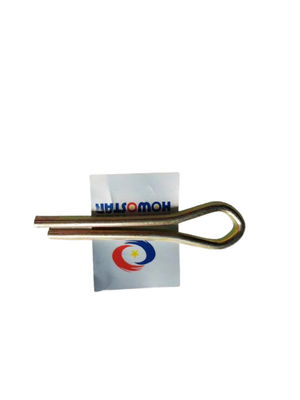-
Place of OriginChina
-
Brand NameHOWOSTAR
-
Minimum Order Quantity1PC
-
Packaging Detailscarton
Fuwa Cotter Pin
Fuwa Cotter Pin : Functions, Materials, and Parameters
Functions
1. Anti-Loosening for Threaded Connections:
The cotter pin is inserted into the nut slot and bolt tail hole after tightening the nut. Its split ends are then bent apart to prevent relative rotation between the nut and bolt, ensuring secure fastening.
2. Anti-Dislodgement for Pins:
It can also be used to secure pins or shafts in place, preventing accidental removal under vibration or load.
Materials
• Carbon Steel:
Common grades includeQ215, Q235(GB/T 700), offering good strength and elasticity.
• Stainless Steel:
Grades like1Cr17Ni7, 0Cr18Ni9Ti(GB/T 1220) are used for corrosion resistance in harsh environments.
• Copper Alloy:
H63(GB/T 5232) is an option for specific applications requiring non-magnetic or conductive properties.
Parameters
(Based on Chinese national standard GB/T 91-2000)
Key Features
• High Elasticity and Toughness:
Made from elastic rigid materials to withstand repeated bending without breaking.
• Corrosion Resistance:
Optional surface treatments (zinc plating, phosphating) enhance durability in humid or corrosive environments.
• Easy Installation:
Designed for quick insertion and bending, ensuring efficient assembly in mechanical systems.
Applications
• Trailer and Truck Chassis:
Secures bolts, nuts, and pins in suspension systems, axles, and linkages.
• Industrial Machinery:
Prevents loosening of threaded connections in heavy-duty equipment.
• Construction and Agriculture:
Used in fasteners for machinery exposed to vibration and shock.
Notes
• For exact compatibility with Fuwa components, refer to the official product catalog or contact a certified supplier.
• Always ensure proper installation (e.g., lubricating the pin hole, bending the ends correctly) to maximize performance.


